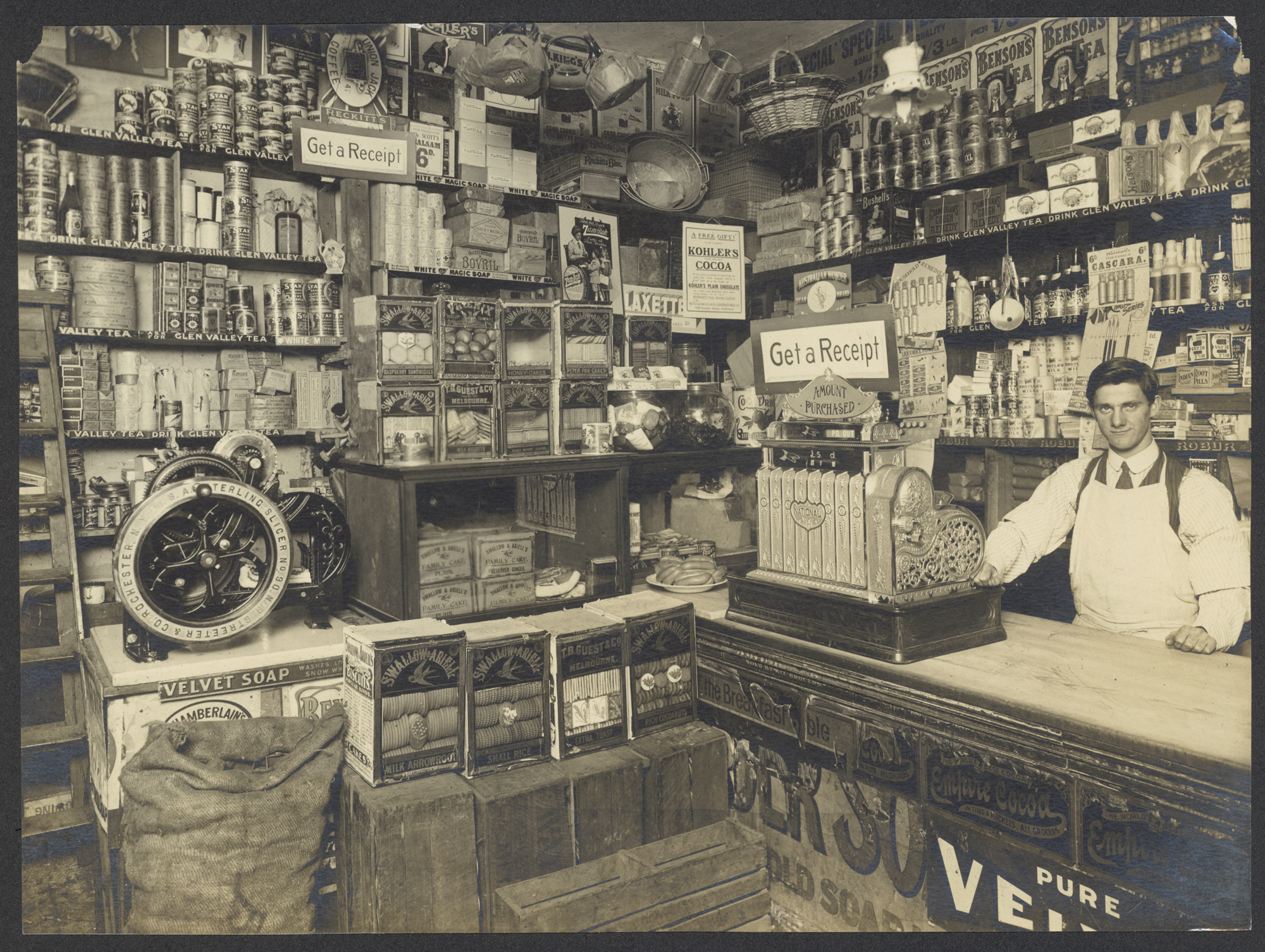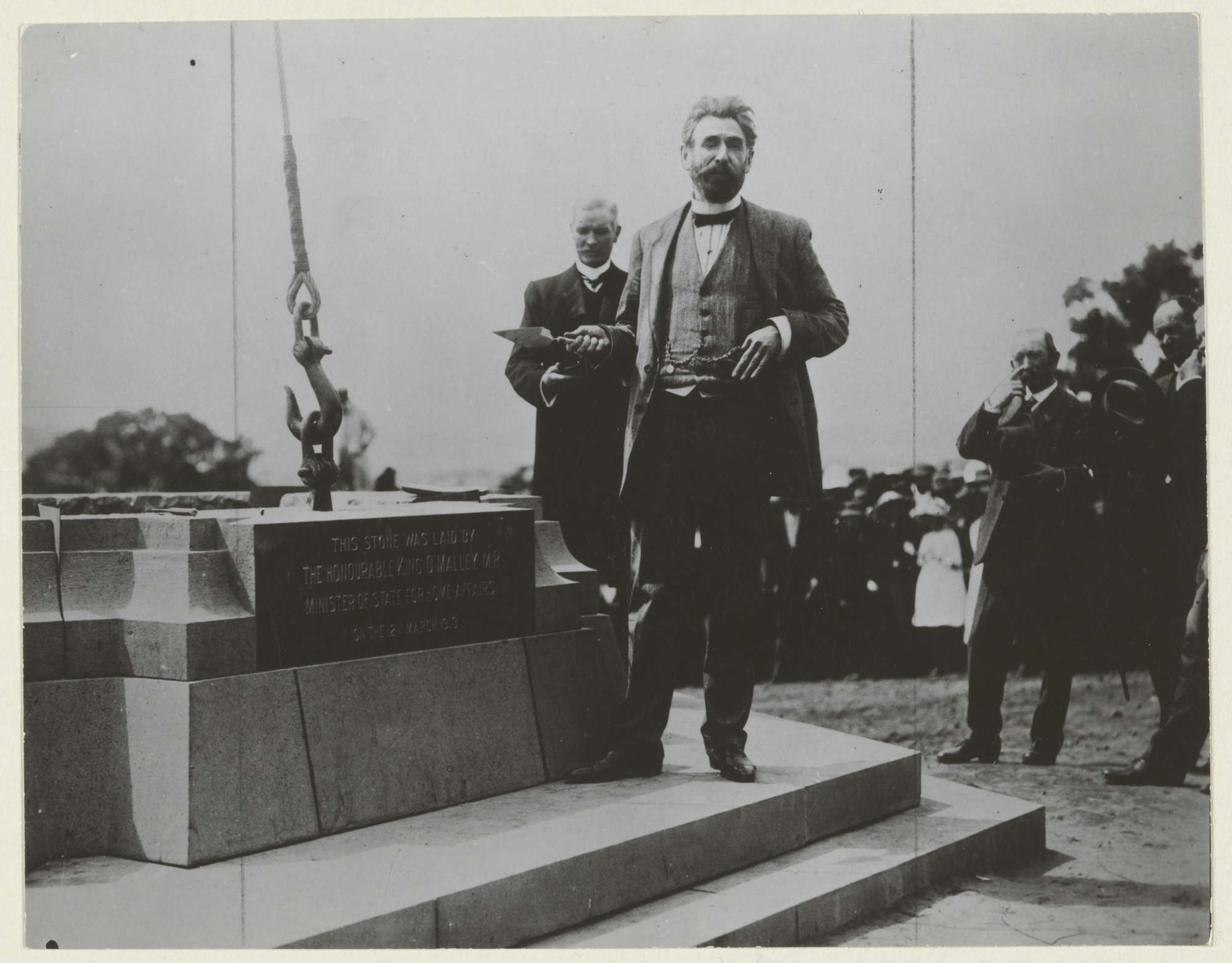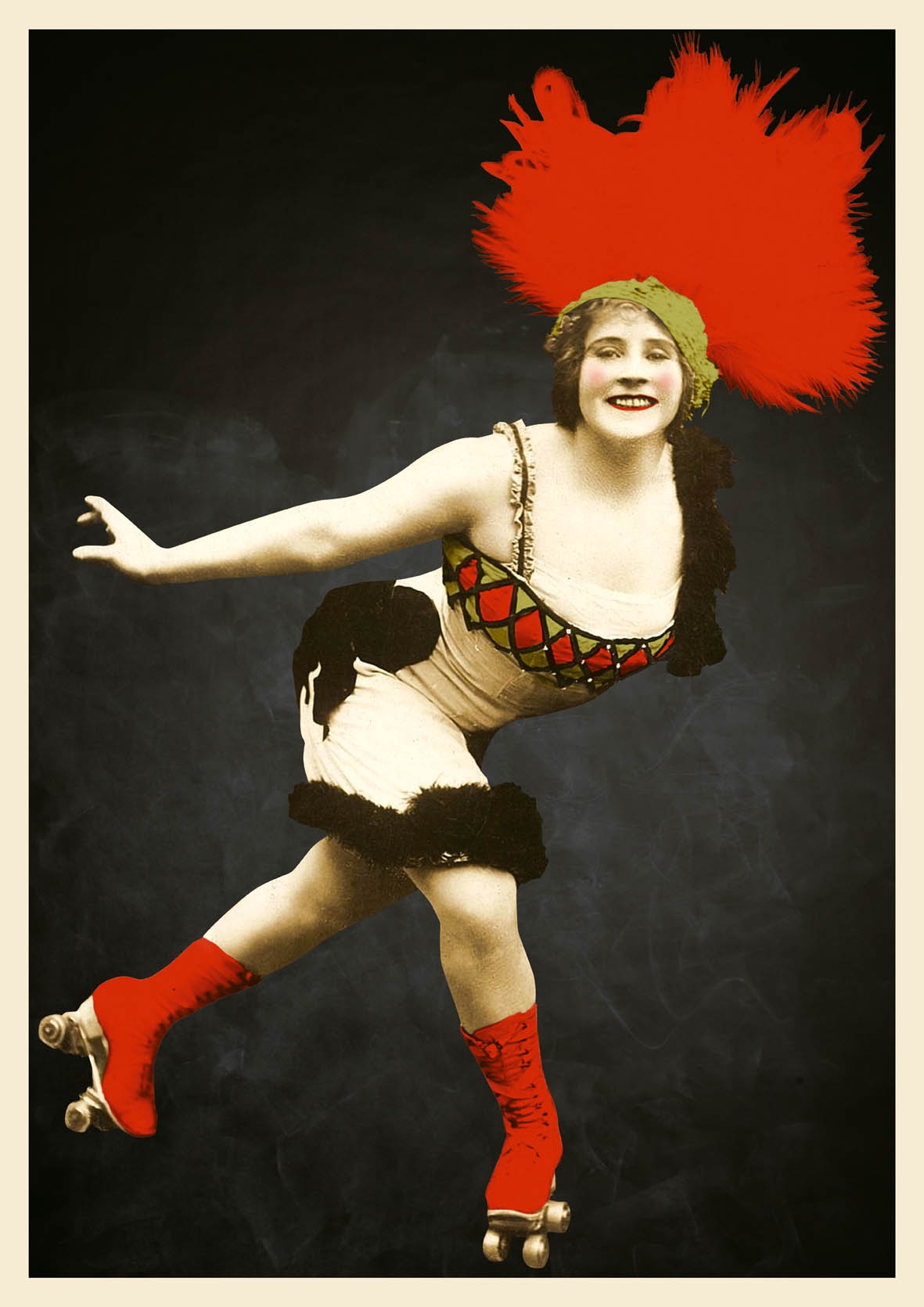exhibition review: ‘glorious days’

Shop interior, Benjamin Bolton, Family Grocer,
Port Melbourne, about 1913
photograph by Algernon Darge
State Library of Victoria
I have been nostalgic about the past for as long as I can remember. The clothing, technology and society of bygone eras have always seemed far more interesting to me than the present day. This interest in mind, I found myself drawn to the new exhibition at the National Museum of Australia, Canberra, which brings to life Australia in 1913. Showing in conjunction with the Centenary of Canberra celebrations, this exhibition took me right back to the birth of Australia’s capital city.
Glorious Days: Australia 1913 highlights the hopes, passions, and daily lives of the newly federated society. A society that was yet to face the horrors of the First World War, did not grant citizenship to its Indigenous peoples, was in the process of creating its capital, and in which a woman’s place remained, for the most part, firmly in the home. Australia in 1913 was, clearly, a nation of contradictions.
Optimism was in the air as I entered Glorious Days. Rows of bunting flags meeting in the centre of the room cultivated a carnival-like atmosphere, while the music of yesteryear played in the background: I was at the Australian fair of 1913 and was about to see the country’s wares. The exhibition features a number of thematic displays which reflect the diversity of Australian society in 1913; from sport and leisure, the arts and education, to nation building and border protection. The open layout of the exhibition means that no display is more prominent than the next; they each have their place at the fair that represented the nation as it was.

Minister for Home Affairs, King O’Malley, laying the third stone at the ceremony to name Canberra, with Prime Minister Andrew Fisher looking on, 12 March 1913
National Library of Australia VN4699293
The story of Canberra is a major highlight. Footage of the naming of the capital in 1913 by the Governor General’s wife Lady Denman and the politician King O’Malley was incredible to watch (I had previously only known the latter as the namesake of one of Canberra’s most popular Irish pubs). It is hard to imagine that what is now a bustling city was, one hundred years ago, little more than farm and bushland. The combination of ephemera, press clippings and footage in this and other displays offer a comprehensive snapshot into the time period. Comparing newspaper articles from the day with the curators’ wall text emphasise just how much attitudes have changed.
These changes have been for the better, as references to the infamous White Australia Policy and the position of Indigenous Australians highlight. The inclusion of Indigenous bark paintings along the back wall make a powerful statement about the Museum’s inclusive approach to Australian history. The story of those displaced to make way for the ‘social laboratory’ of Australia are integrated in a way that would have been unimaginable in 1913. For me, displays of photographs of Indigenous Australians – expressing how they were ‘documented’ by their colonists – brought home the prejudiced attitudes that these people have been – and, in many cases, continue to be – subjected to. It is a credit to the curators to have gone to such lengths to bring these two perspectives together and show both the progressive and regressive attitudes of the time.

Rollerskater Nellie Donegan, 1913. Mitchell Library, State Library of New South Wales, P1/486.
Colourised image: National Museum of Australia.
Fashion displays told something of the daily lives of Australians a century ago. Much like today, sporting and leisurewear was an integral addition to one’s wardrobe back then. While I enjoyed seeing cumbersome ‘bathing suits’ and impractical tennis ‘blouses’, it was the photograph of rollerskater Nellie Donnegan that captured my imagination. First of all, I had no idea that rollerskates existed in 1913, yet alone that rollerskating, or ‘decorative dancing’ was a popular leisure activity for the energetic middle classes. Vaudeville entertainers like Donnegan added a sense of glamour to popular crazes such as rollerskating and tango dancing; certainly not pursuits that would have been acceptable in colonial Australia!
The position of women was also testing boundaries of acceptability in 1913. While I was aware that Australia was (after our Kiwi neighbours), the second country in the world to give women the vote, I did not know that we influenced the enfranchisement of British and American women. Influential Australian suffragettes travelled to England to offer support to their disenfranchised sisters. This support is made clear in a provocative banner painted by Australian Dora Meeson Coates depicting two Classically-dressed women, draped in symbols pertaining to the Union Jack, with the message ‘trust the women Mother, as I have done’. It was inspiring to learn about Australia’s contribution to the long (and ongoing) battle for gender equality.
Upon exiting the exhibition, a salient quote put all that I had seen into perspective: ‘hope died in 1914’. While the outbreak of World War One overshadowed the optimism expressed by the nation just a year before, it did not extinguish it. Glorious Days: Australia 1913 brings to life an optimistic, ‘young’ society that laid the foundation for the Australia of today. When we look at the past it is all too easy to romanticise the good, or magnify the bad, yet this exhibition manages to strikes a balance between the two, and offers a fascinating survey of the nation as it was one hundred years ago.
‘Glorious Days: Australia 1913’ is showing at the National Museum of Australia, Canberra, until 13 October 2013. Cost: $10 adult, $8 concession, $5 child, $22 family, Friends of the Museum half-price.

